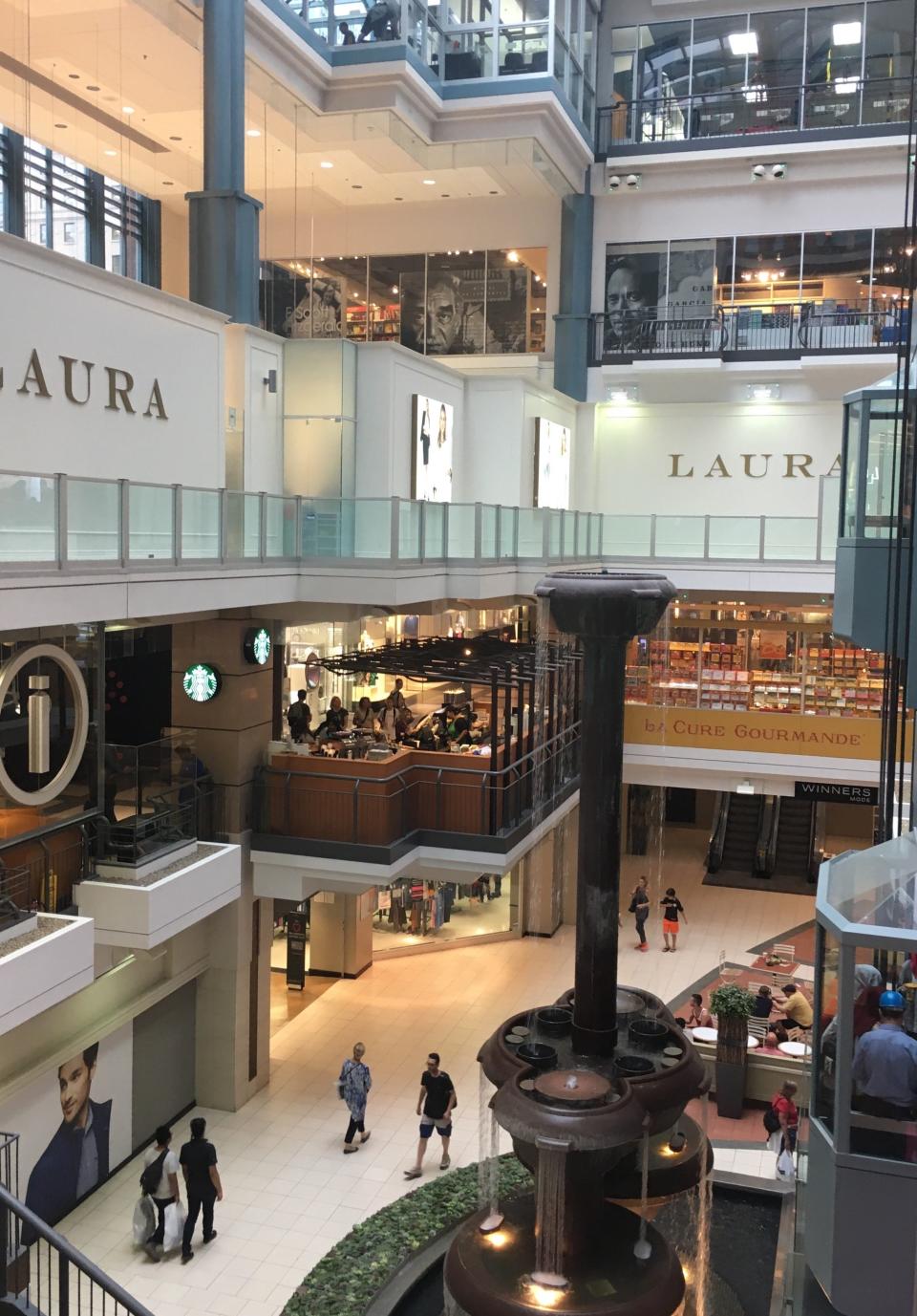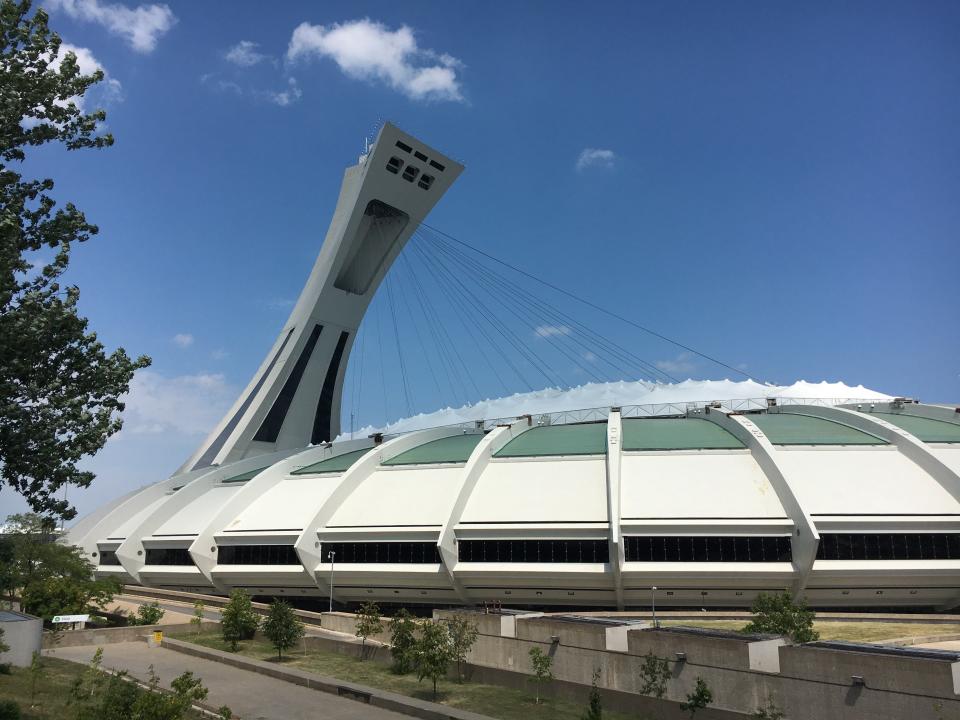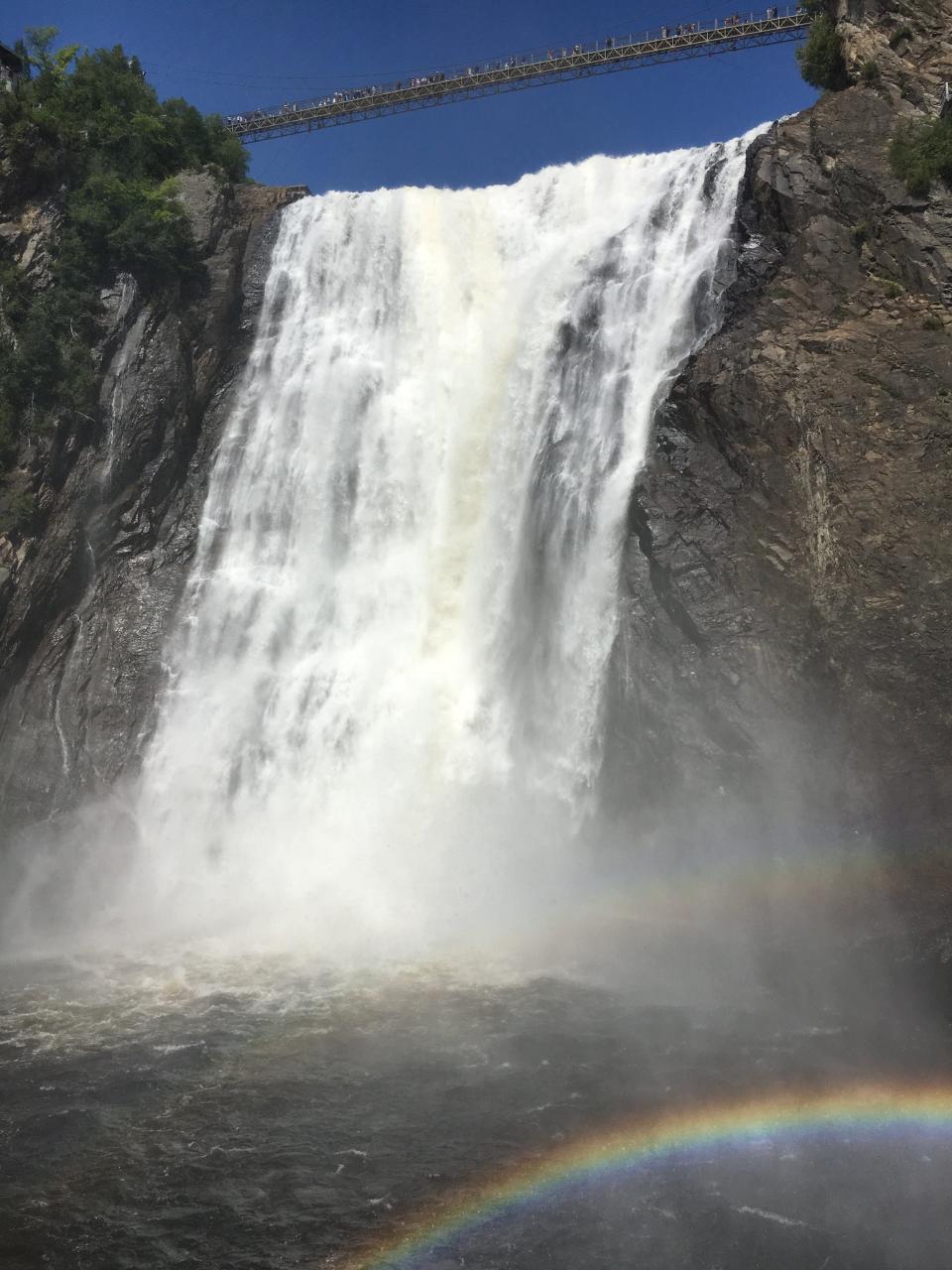First time in Montreal? Here are 5 things you should do
MONTREAL — Less than three miles from the St. Lawrence River, a small wooded mountain stands just 764 feet above sea level but still lays down the law from high above the surrounding metropolis.
This is Mount Royal, a landmark that gave this city its name, according to local legend — "Mont-real." It also has been such an important part of the landscape that local regulations have forbidden any nearby buildings from rising above its highest point.
Compared to Toronto, New York or even Cleveland, Montreal’s skyline scales short in stature as a result. But Montreal’s depth — not height — is what really makes it stand out, especially for Americans seeking a European-style adventure just an hour or so north of the border.
Here are five tips and observations from a recent summer vacation here and other French Canadian stops in Quebec province.
It was a trendy time to visit. Last year, Canada’s second-most populous metro area hosted a record 1.6 million American tourists, a number that is expected to grow again this year with 700 weekly direct flights from 29 American cities, according to the Montreal’s tourism authority.
Guess which country tops the list?: The 25 countries that love to visit America the most
Know these Canadianisms: 35 Canadian words and phrases Americans just don't get
Go underground

Who needs giant skyscrapers when you’ve got an underground city? Beneath Montreal lays a subterranean mall, subway and tunnel system that’s like something from a dream. Descend via scores of outside entry points and find a labyrinthine network of pathways that covers about 20 miles. Here you can shop or walk in warmth in the winter and step out of the sun or occasional rain during the rest of the year.
Besides that, we found this system to be much easier than driving a car downtown, with all of its one-way streets and infamous road construction during peak tourism season in the summer.
Souvenir shops even sell pillows and fridge magnets depicting "Rue Barree," a famous street sign. But “Rue Barree” is not a famous boulevard in the historic part of the city. It’s a construction warning in French, meaning "street closed."
We ordered an Uber for longer treks across town (no Lyft available as of August 2019). To get an even better sense of the city, walk through its diverse neighborhoods, which are dotted by lush parks and restaurants offering flavors from France, China, Syria and beyond. They fan out from Old Montreal, the more Parisian, upscale section of downtown near the river.
Taste-travel the world
After landing at the airport, our Uber driver posed an important question for his American guests: “Will you try poutine?”
This ubiquitous Montreal dish blends gravy and cheese curds over a pile of fries. The best place to go for it, he said, was La Banquise, a 24-hour joint offering 30 different variations. Go with an empty stomach and a hankering for classic Canadian comfort food — meaning a heavier meal with multiple local beer options.
As satisfying as it was, it just didn’t rank near the top of our food experiences here. But that’s largely because there were so many other savory bites to sample, including buckwheat-based crepes at the Jean-Talon Market in Little Italy and minced lamb brochettes with pomegranate tahini sauce at KazaMaza, a Middle Eastern restaurant.
Your first visit to Montreal also isn’t really official until you’ve stood in line for a meal at Schwartz’s deli, famous for its smoked meat sandwiches with mustard on rye for about $8 (U.S. dollars). The anticipation that built during the wait outside probably made it taste even better than it was, which was especially scrumptious with a dill pickle and cole slaw.
Classic French still won our palates in the end. Our favorite dinner came from L’Express, a bistro founded in 1980. The caper-infused steak tartare, with frites, cost about $21 (U.S. dollars). It hit the spot after midnight, when restaurants and bars stay open until 2 or 3 a.m.
Parc it
Mount Royal Park rules the roost here for a reason.
It was designed by the same person — Frederick Law Olmsted — who designed Central Park in New York, and it has the same effect. The park becomes an urban oasis in the summer, lined by bike paths, shaded trails for hikers and views from near the summit that attract tourists and locals. And if it gets a little too muggy in the summer, there’s a chalet to cool off near the top, where you can buy a local Bec cranberry soda sweetened by maple syrup.
Keep in mind it’s a different world here during the city’s cold white winters, which is why outdoor parks in Montreal are especially popular for quiet leisure during warmer, greener parts of the year.
The most beautiful is probably Montreal’s vibrant botanical garden across town, among the world’s largest at about 185 acres. Tickets cost about $15 (U.S.).
As you stroll through its collection of 22,000 plant species and cultivars, look up and behold something that looks like part of an upside-down Starship Enterprise. This is the iconic Montreal Tower, connected to Olympic Stadium in Parc Olympique, site of the 1976 Olympic summer games. The tower leans toward the river at 45 degrees and is the world’s tallest inclining tower in the world at 541 feet. A funicular ride to the top also costs about $15 (U.S.) and provides panoramic man-made views to rival the natural lookouts at Mount Royal.

Respect the language and carry cash
As the cradle of French civilization in North America, the province of Quebec does almost everything in French — menus, road signs and local conversations. But not once did we encounter a failure to communicate using English. That’s because so many people here have learned English as a second language.
About 45% of the population in Quebec speaks both English and French, according to the 2016 census. It still helps to know a little basic French, even if it’s just to show the locals you’re making an effort, which they appreciate.
Some businesses here also appreciate Canadian cash or debit only and don't take credit cards. If they do accept credit cards, some don't take American Express. For Americans, the best way to avoid fees and bad rates on cash currency exchanges is to plan ahead instead of making a cash dash to a convenience-store ATM in Canada. Sometimes your American bank can order Canadian dollars for you to exchange before your trip.
Venture outside Montreal

The best time to get behind a steering wheel in Montreal is when you want to venture outside of it.
Driving is pretty easy once you get out of town and into the parts of Quebec where British loyalists once sought refuge from the American Revolution. These are the Eastern Townships, covered in green trees in the summer and a peaceful detour on the way to Quebec City less than three hours away. We stopped at a winery for lunch in Dunham and spent the night at a bed-and-breakfast in the small town of Magog, with its old-fashioned main street of shops and restaurants next to Lake Memphremagog.
We also ventured into nearby Vermont, where there was no wait at the border when we entered in Derby Line. Just bring your passport. And if you venture further east to Quebec City, bring your appetite and your camera.
This multilayered city is a nice slice of Paris in North America, fortified on the St. Lawrence River with castle-like architecture, cobblestone streets with shopping and possibly even better restaurants than Montreal, including our favorite, Aux Anciens Canadiens. This red-roofed time capsule serves provincial cuisine such as old-fashioned meat pies, bison stew and apple cheesecake with maple caramel
You can burn the calories the next morning with a walk up and over another of Quebec’s natural wonders just outside of downtown — Montmorency Falls. The white water drops 272 feet, creating a rainbow with the mist below if the sun is shining just right.
Follow reporter Brent Schrotenboer @Schrotenboer. Email: bschrotenb@usatoday.com
This article originally appeared on USA TODAY: Montreal, Canada, things to do and travel tips for Americans

